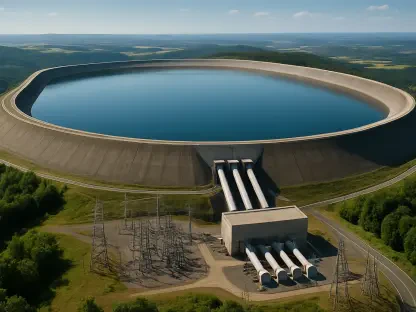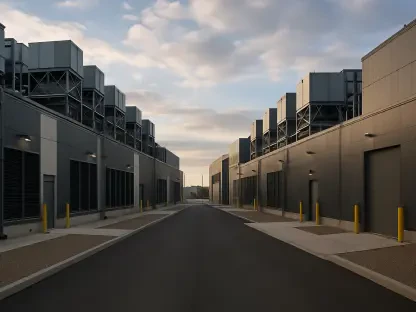As the demand for sustainable energy solutions grows, the United States is on the verge of solidifying its position as a leader in the global liquefied natural gas (LNG) market. This strategic ascent is marked by the authorization to construct Venture Global’s CP2 LNG facility, which is set to become the largest LNG export hub in the nation. Located in Louisiana, this development is not only aimed at bolstering economic growth but also responding to the rigorous environmental standards that govern energy production today.
Market Context and Strategic Importance
The Venture Global CP2 project underscores the U.S.’s commitment to expanding its energy influence worldwide, particularly within the LNG sector, known for its strategic importance to energy security and economic development. The facility’s inception comes after thorough examinations concerning environmental impacts, aligning with public interest initiatives focused on reducing ecological footprints. Moreover, the project reflects broader energy market trends addressing the increasing need for clean energy alternatives and international cooperation in the energy sector.
LNG Market Trends and Future Projections
The emergence of the CP2 facility encapsulates a series of transformations within the LNG market, both in the U.S. and globally. Historically, the American Gulf Coast has served as a focal point for LNG activity due to its proximity to both domestic gas reserves and international trade routes. On the production side, significant technological advancements and infrastructure investments have optimized the extraction and exportation processes. Going forward, the market is anticipated to grow with increased international demand, especially from Asian and European countries seeking cleaner energy sources.
Navigating Regulatory and Environmental Landscapes
Aligning Industrial Goals with Sustainability
In light of recent approvals, the LNG industry faces the crucial challenge of harmonizing industrial expansion with stringent environmental regulations. Venture Global’s project was greenlit following extensive evaluations that mitigated air quality concerns, illustrating a commitment to sustainable practices. The ongoing dialogue between industry stakeholders and environmental organizations showcases the potential for collaborative solutions that enable industrial growth while prioritizing ecological preservation.
Evolution of Market Dynamics
Adapting to shifting energy dynamics necessitates a focus on sustainable innovation. Industry players are increasingly investing in green technologies to reduce their carbon footprint and meet new regulatory mandates. These investments are driving the development of cutting-edge solutions, which are setting benchmarks for efficiency and environmental compliance. Consequently, the sector’s evolution is paving the way for advanced methodologies that could redefine LNG production standards.
Regional Specifics and Strategic Implications
The Gulf Coast’s unique geographic position presents both opportunities and challenges for LNG exporters. While the region is primed for expansion due to existing infrastructure and favorable geographic conditions, it must also navigate varying local policies and regional logistical constraints. Understanding how these factors influence operational strategies is essential for stakeholders looking to leverage the Gulf Coast’s advantages without undermining their economic or environmental goals.
Strategic Outlook and Recommendations
Reflecting on the strategic insights drawn from Venture Global’s flagship project, stakeholders in the LNG industry are encouraged to prioritize technological investment and regulatory compliance. By aligning operational objectives with emerging global energy trends, companies can capitalize on market opportunities while mitigating potential risks. Adopting sustainable practices not only ensures adherence to environmental policies but fosters innovation that can spur future growth.
Businesses positioned in this sector must consider these evolving dynamics permanently, as the landscape of LNG production and exportation continues to morph into a more digital, interconnected ecosystem. This transformation paves the way for enhanced operational efficiencies, presenting both challenges to adapt and opportunities to thrive within the global market.
Conclusion
At this juncture, Venture Global’s CP2 facility signifies more than just an expansion in capacity—it’s a harbinger of shifts within the LNG industry at large. It signifies a pivotal moment in balancing economic progress with environmental stewardship. As the energy landscape evolves, stakeholders in the LNG market are required to remain agile, embracing technological advancements and maintaining the delicate equilibrium between growth and sustainability. This proactive approach is essential for those aiming to shape the future of global energy, making informed strategic decisions that endure and thrive despite the complexities faced in today’s dynamic market.









